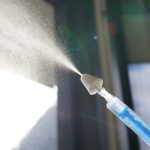This is the third post in a blog series entitled “The Opioid Epidemic,” a collaboration between UPMC and the University of Pittsburgh Schools of the Health Sciences highlighting the doctors, researchers and nurses making significant efforts to reduce diversion and misuse of prescription opioids. For more information about the series or resources to help with drug addiction, click here.
Western Psychiatric Institute and Clinic of UPMC (WPIC) and Children’s Community Pediatrics (CCP) have joined forces in pediatric practices to help tackle the rising rate of substance abuse. At several CCP locations, doctors are screening patients between the ages of 11 and 18 to determine if they are at high-risk for developing substance abuse problems or if they already are abusing. So far, they have screened over 1,000 kids in the first six months.
“The younger the child or adolescent is when they start using substances, the more likely they will be to develop a long-term substance abuse problem,” said Abigail Schlesinger, M.D., a child and adolescent psychologist at Children’s and WPIC. “We know that early detection of substance abuse and immediate interventions can drastically reduce that risk.”
When families arrive at their pediatric appointments, the child or adolescent patient will complete a brief questionnaire with behavioral health questions such as, “Do you have friends who use drugs or alcohol?” Or, “How many times in the last year have you used pot?”
The pediatrician and patient will then meet privately to talk about the questionnaire. Based on the pediatrician’s assessment, an appropriate treatment plan will be discussed with the family and put into action.
While it might seem early to screen patients as young as 11, this program is modeled after the American Academy of Pediatrics guidelines.
This collaboration between WPIC and CCP engages and educates families on the dangers of substance use and helps provide evidence-based clinical care if needed.
“Pediatric primary care practitioners are ideally positioned to identify alcohol and drug use in their patients and intervene before the use becomes more problematic,” said Antoine Douaihy, M.D., medical director of addiction medicine services at WPIC. “Because alcohol and drug use during adolescence frequently co-exist with other medical and psychiatric disorders, early identification and treatment of alcohol and substance use may prevent adverse long-term medical and psychiatric outcomes.”








